|
|
Post by grahamew on Nov 21, 2016 15:27:25 GMT -5
Looking at photos of leaders with 'knife clubs' it's clear that at least some were long and would, I imagine, have been pretty difficult to use, even on horse. This photo allegedly shows Spotted Eagle's band in Canada, though it has elsewhere been labelled as Cree and if I recall correctly, Ron Papandrea thinks it shows Black Bull and some of the Lakota who stayed in Canada after Sitting Bull had left. The club must be close to five feet in length. 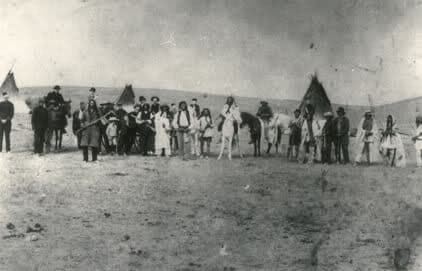 I wonder if at some point their use became more symbolic than practical. Here's Spotted Eagle's club (50.5 inches): 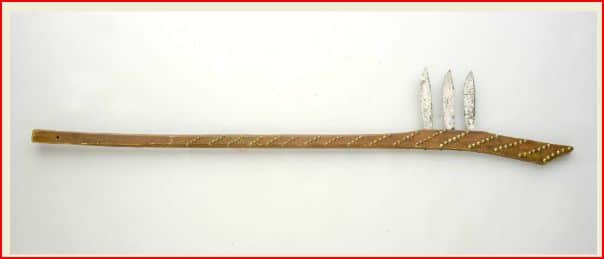 This one is four feet long: 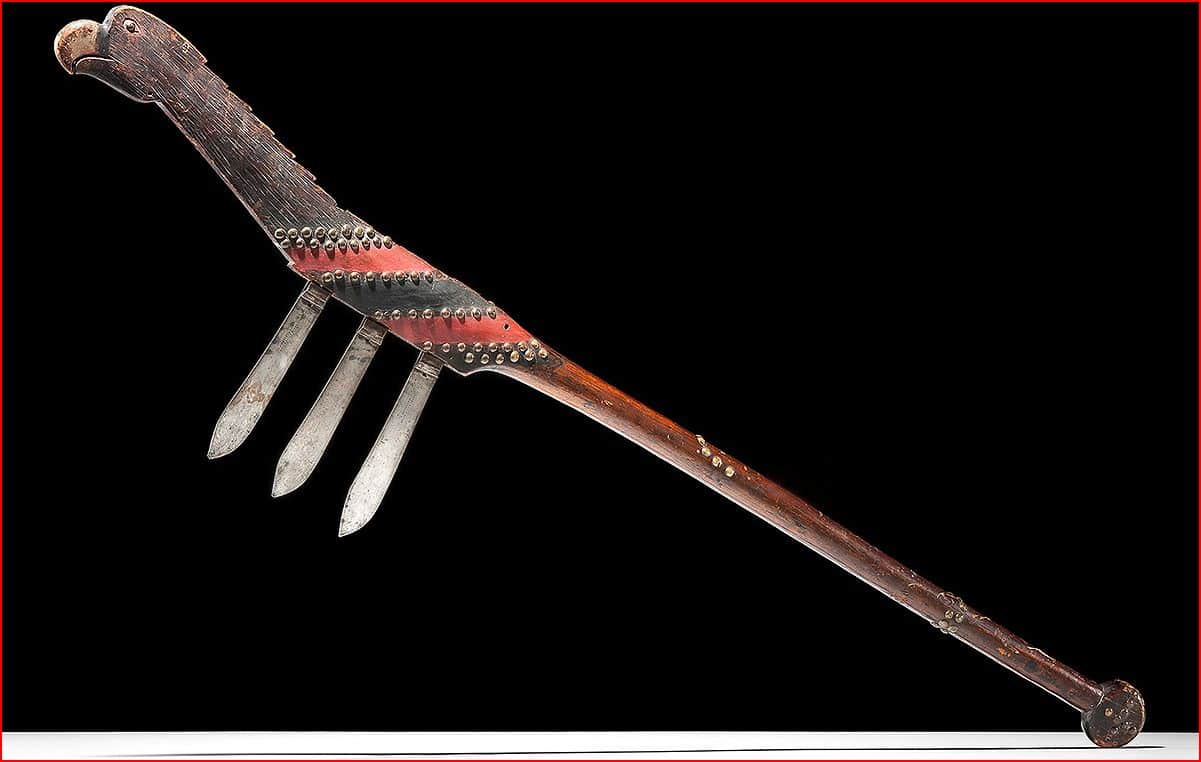 But Spotted Eagle's (or that's who I think this is at the rear right of the tent) seems even longer. It seems to be at least five feet. Look how he's resting on it here: 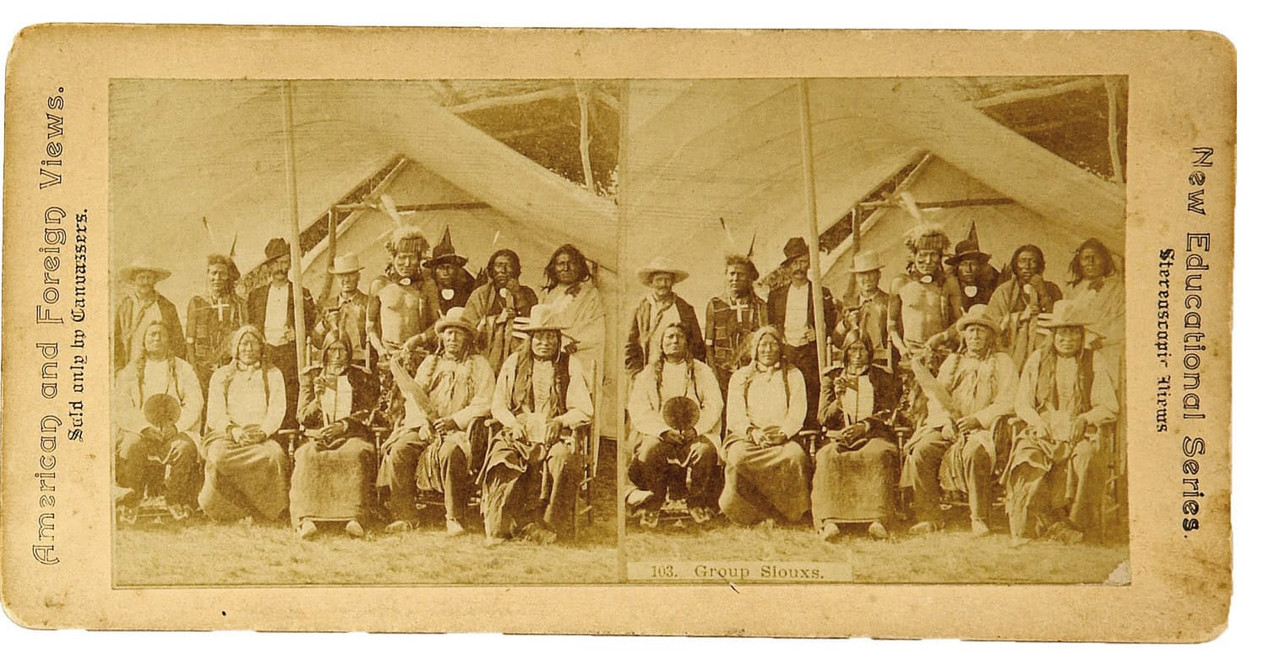 Perhaps there were more utilitarian models for fighting and others that were symbolic of leadership? |
|
|
|
Post by nicolas (carlo) on Nov 21, 2016 18:20:53 GMT -5
Hi Grahame,
Can't post any photos from my phone, but the R.L. Kelly photo of Spotted Eagle shows the enormous size of the warclub in relation to his body size. Personally I tend to think this size is an anomaly, haven't seen any others that were that long, but I agree this one would not be practical at all in battle so would be ceremonial/badge of office.
Two observations:
1. Gunstock warclubs with one or multiple knifes originated among the more eastern tribes, I believe. Do we know of the significance among these tribes?
2. If you look closely to the pictures where Spotted Eagle is holding the club (Huffman, Kelly) and the museum photo, you will notice that additional rows of brass tacks were added later on. Even between the Huffman and Kelly pictures there is a difference in number of rows (5 vs 7, although different sides). Could this have additional significance or just beautification?
|
|
|
|
Post by grahamew on Nov 22, 2016 5:41:48 GMT -5
 Yeah, I agree. |
|
|
|
Post by kingsleybray on Nov 22, 2016 6:47:37 GMT -5
Knife clubs like the ones pictured above definitely became one insignia of office denoting the headmen of the akicita, or Lakota camp police. So I think it highly likely that the over-sized examples are just as you guys say, symbols of authority within the band or tribe. They carried the sense that the bearer had legitimate, and coercive authority vested in him by the council.
I suspect early versions of the knife club, such as the gunstock clubs, carried similar symbolic value throughout the prairie-woodland edge zone going back into the 18th c. and beyond. Perhaps they have their ultimate origins in the clubs and maces attested in the Mississippian (mound-builder) societies of the era 1000-1500 AD.
|
|
|
|
Post by grahamew on Nov 22, 2016 8:28:29 GMT -5
I'm assuming less unwieldy versions were still being used in battle because they are featured in the Red Horse paintings. 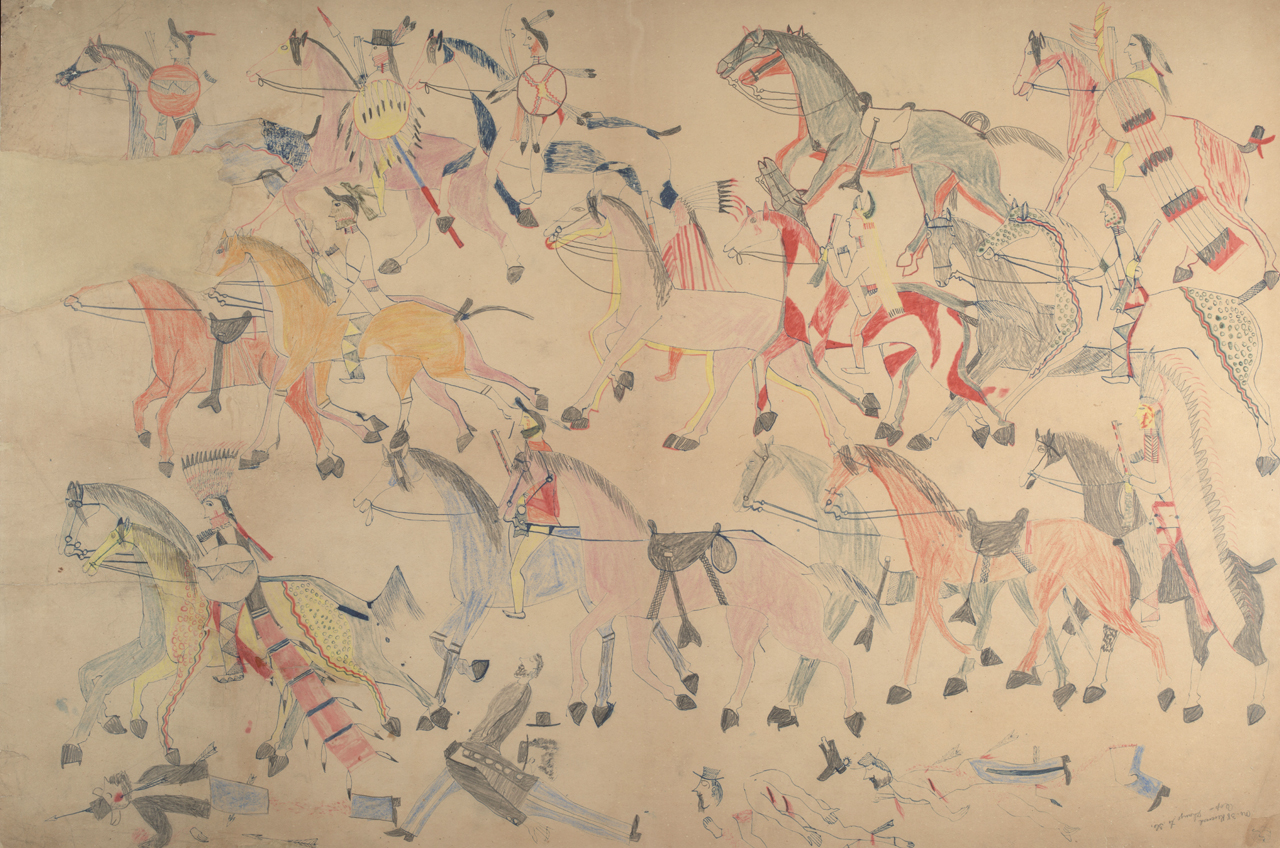 The one at top right seems to be stained with blood as if just used. I can't imagine, even on horse, someone being able to use one of the longer versions effectively. Long Dog's looks a bit more practical though presumably it also denotes his status:  |
|
|
|
Post by grahamew on Nov 22, 2016 14:10:30 GMT -5
Here's Long Dog (probably five or six years later) with his club again - except that it seems to be a different one, judging by the tack arrangement and the shape of the end. I wonder if we're to take his crucifix in this later Scott photo to be a variant on the pectoral cross: 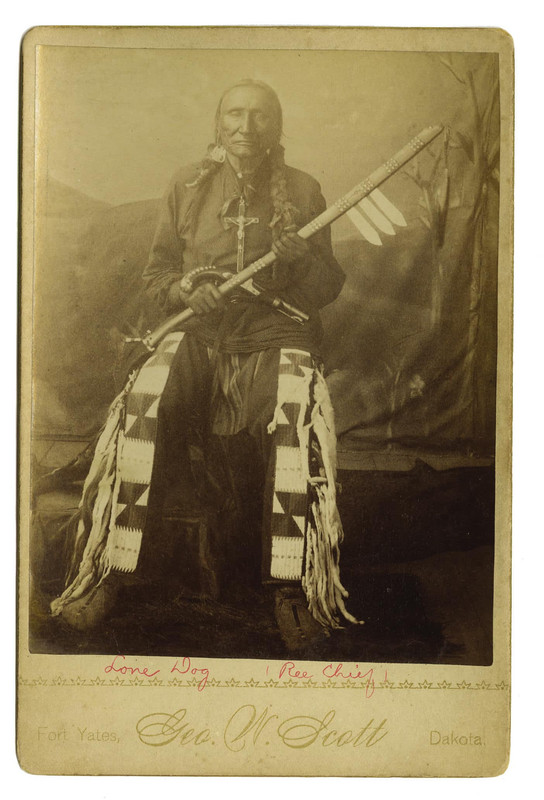 In People of the Buffalo: Essays in Honour of John C. Ewers, there is a drawing by Standing Bear of Lakota leaders from 1877 and it's noticeable that two of them (one, supposedly, Crazy Horse) carry knife clubs. It's also noticeable that the two who do are stripped to breechclout. I believe the man with the club here may be Moccasin Top, a Sicangu. The photo was taken in the Indian camp of Buffalo Bill's Wild West Show in London in 1887. By this time, Cody was largely using Oglala, even though their tribal affiliation was occasionally deliberately incorrect to give the impression that he was using people from a wider range of tribes: 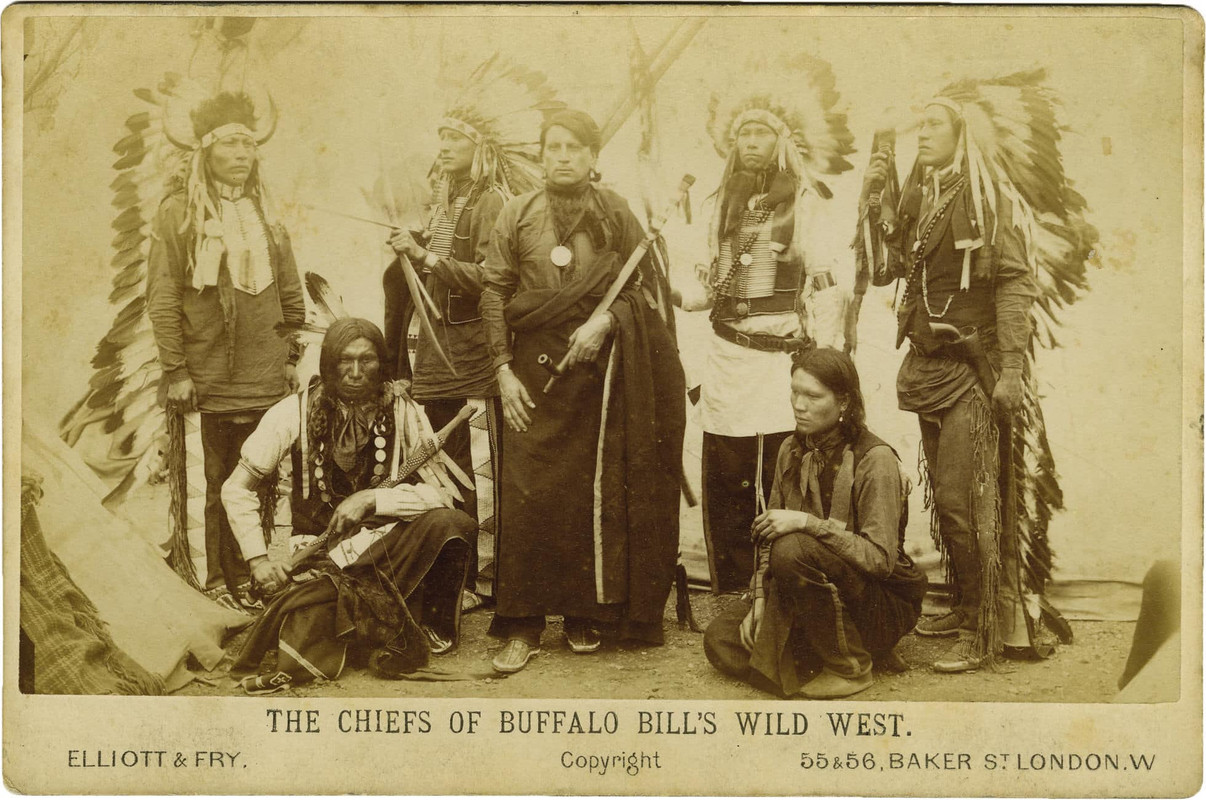 |
|
|
|
Post by grahamew on Nov 22, 2016 17:04:33 GMT -5
Spotted Eagle again. I'm not convinced this is the same club - it looks shorter compared to that in the Kelly and Haynes photos. This is one of a pair of photos of Spotted Eagle by the same photographer with the same backdrop. In the other, he has rifle: 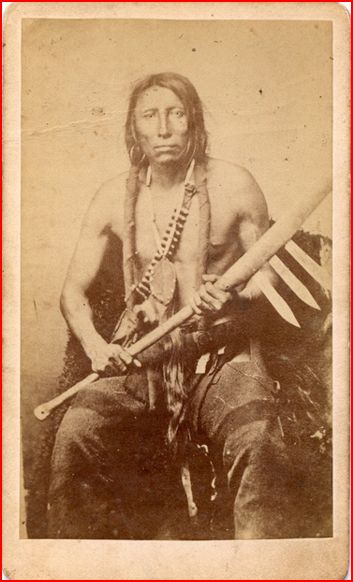 Here's an enlarged, though not especially clear, copy of the photo that supposedly shows Spotted Eagle in Canada with some members of the NWMP and what looks to be Metis. I wonder if the identification was made solely on the basis of the knife club. As I said, I'm sure it has also been claimed to show the village of Black Bull, the Lakota leader who remained behind in Canada after Sitting Bull returned across the border, but it's also been identified as a Cree village - which brings up the question of whether or not there is evidence that other tribes used these clubs... 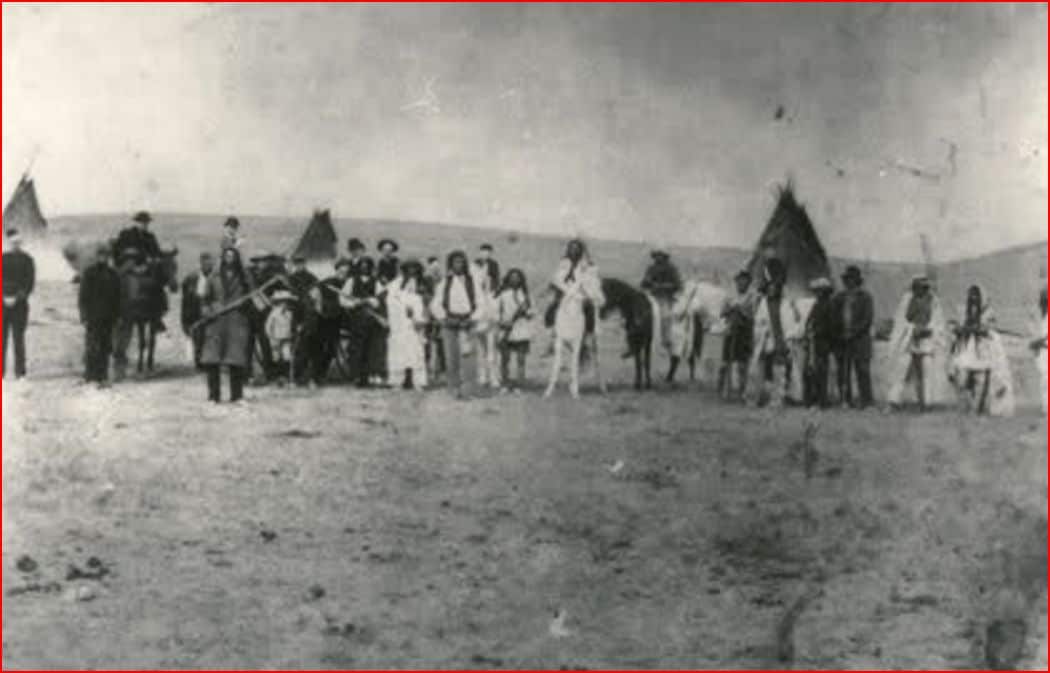 |
|
|
|
Post by kingsleybray on Nov 22, 2016 17:34:45 GMT -5
There were two photo's of He Dog taken during the 1877 Oglala delegation to Washington, in which he is shown carrying a knife club very similar to the one held by the man in the Wild West Show picture. It is, I believe, a snake effigy club, with the head carved like a snake's, and the brass tacks set in wavy lines to suggest scales. My copy is not to hand, but check out John C. Ewers's wonderful book on Plains Indian Sculpture, which has a great repro of the He Dog portrait, then sets it next to the first pictorial depiction of a Dakota Indian -- done by a French artist c. 1670. That early chief, styled by the artist as the "King of the Nadowessioux", is also carrying a snake effigy club. Not a knife club, but the continuity in imagery is clear.
Check out the He Dog portrait, though, because it seems possible the knife club depicted in the Wild West Show image is the same one. And the Oglala Moccasin Top belonged to the same tiyospaye as He Dog, the Sore Backs. Food for thought.
|
|
|
|
Post by grahamew on Nov 23, 2016 2:16:01 GMT -5
Possibly, though I think the head of the He Dog club is at a slight angle to the rest of it and I'm not sure that's the case with Moccasin Top's. 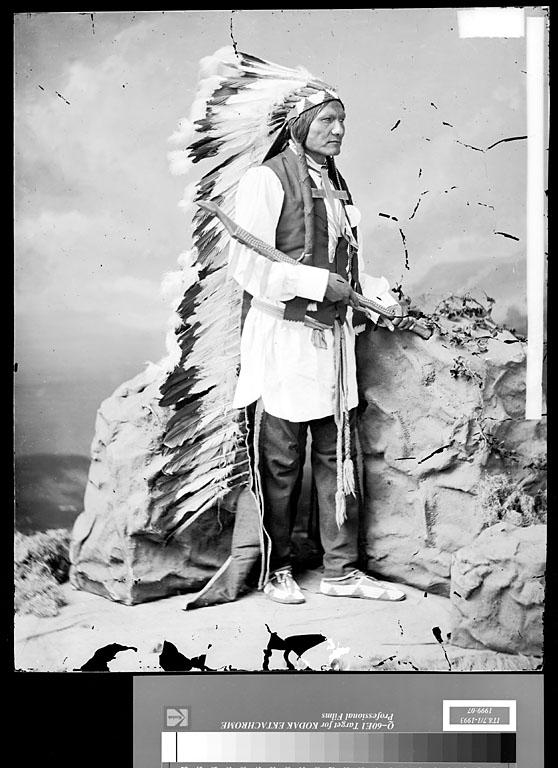 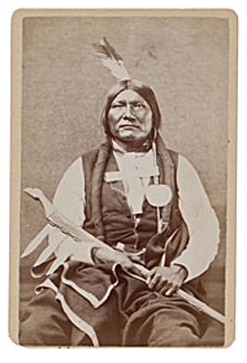 |
|
|
|
Post by grahamew on Nov 23, 2016 13:05:29 GMT -5
Here are the Standing Bear drawings mentioned above. Does anyone have a key to show who each man is? 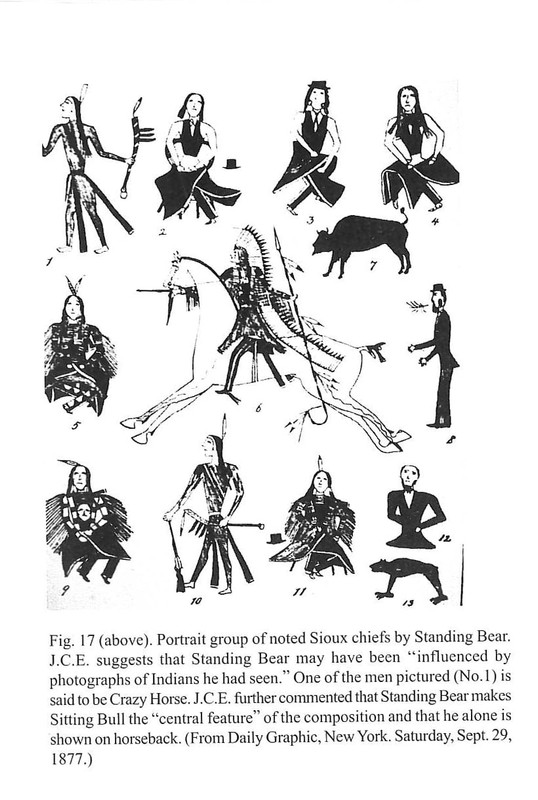 |
|
|
|
Post by kingsleybray on Nov 23, 2016 17:23:57 GMT -5
Colin Taylor shared with me a xerox of the newspaper cutting including the pictures drawn by Standing Bear. It's at the bottom of a box file somewhere, but I'm pretty sure that the identifications of the 13 numbered portraits are as follows:
1. Crazy Horse
2. Red Cloud
3. Red Dog
4. Two Lance
5. Young Man Afraid of His Horse
6. Sitting Bull
7. name glyph for Sitting Bull
8. white official
9. Old Man Afraid of His Horse
10. Touch the Clouds
11. Spotted Tail
12. white official
13. name glyph for Standing Bear (the artist, father of Luther Standing Bear)
I may have Old Man and Young Man Afraid reversed, but otherwise I'm sure of them. The two white men are not identified, but spouting hot air is clearly depicted in no. 8! They seem to me real portraits, as Dr Ewers opined. If (and it is an if, I grant) we assume they derive from a single event/context I suggest it is the council at Red Cloud Agency May 25th, 1877 with Gen. Crook. Most of the men listed were present, and recorded as such in documentary and reminiscent accounts; Sitting Bull's status as the last Lakota leader remaining away from the reservation (in Canadian exile) was a major topic of the talks, with Crook urging the leaders to show goodwill and secure Sitting Bull's surrender.
|
|
|
|
Post by grahamew on Nov 23, 2016 18:00:19 GMT -5
Thanks. That's great Kingsley. Interesting that Touch the Clouds and Crazy Horse were represented in such a way.
|
|
|
|
Post by kingsleybray on Nov 24, 2016 8:27:28 GMT -5
Yes, we see three chiefs - Red Cloud, Red Dog, Two Lance - presenting themselves in manufactured clothing, white shirts, dark waistcoats (vests, to American readers!), hats. We have three chiefs - Spotted Tail and the two Man Afraids - attired more 'traditionally', notably in hair-fringed ceremonial shirts.
Note that several of these men are depicted seated on chairs. I think only no. 5 is depicted seated cross-legged, i.e. seated on the ground. Incidentally, chairs are mentioned at the council at Red Cloud Agency I alluded to above; and one newspaper account mentions Touch the Clouds going in to an office or room and carrying out more chairs for the chiefs to sit upon.
And we have Crazy Horse and Touch the Clouds presented as war leaders - naked but for long tailed breech cloths (are they depicted barefoot, I wonder?), brandishing knife clubs and in Touch the Clouds' case a rifle. Note that knife clubs are symbolic of a different style or area of leadership than the civil chiefs. It's worth noting that Standing Bear depicts this pair standing, not seated in the deliberative manner of 'chiefs'.
Ewers made the point in the caption that Sitting Bull is presented as centre of the composition. However, I wonder if this is a single composition -- or have the 'portraits' and name glyphs been grouped round the Sitting Bull figure by the newspaper?
|
|
|
|
Post by grahamew on Nov 24, 2016 12:13:28 GMT -5
I wonder if he drew any more like that... 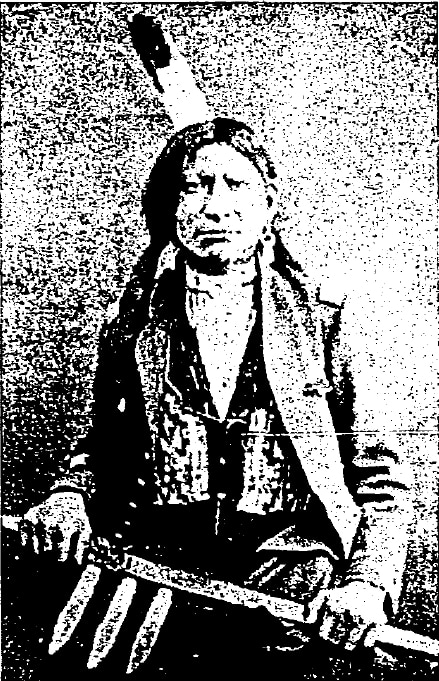 Unidentified Lakota by Cross  Pretty Voice Hawk (?). Not sure about the photographer but I'm guessing around 1900 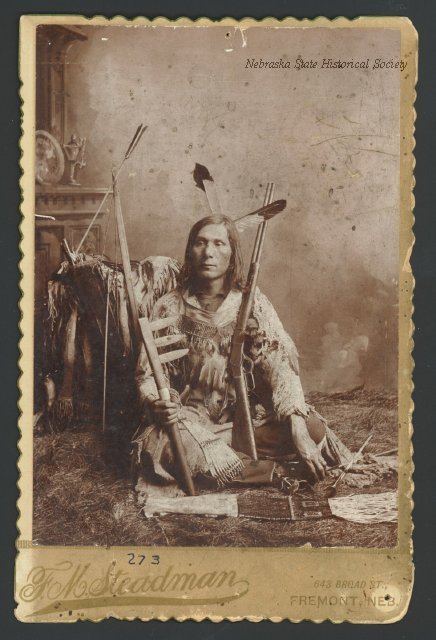 Three Strikes 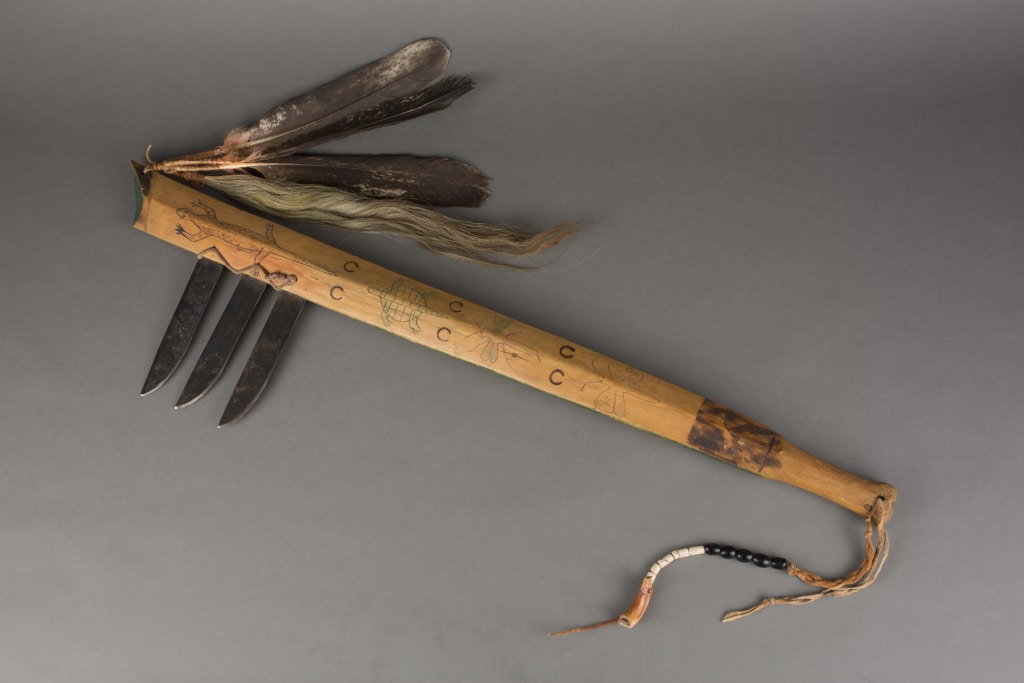 A Lakota club from the Elizabeth Butler Cole Collection at the Portland Art Museum, circa 1870 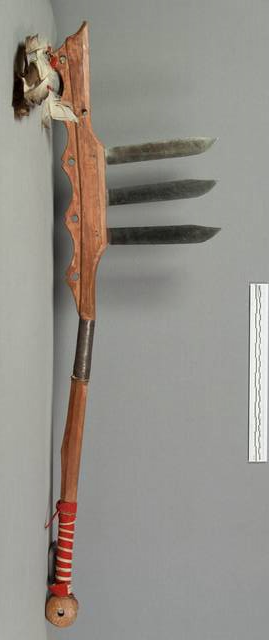 A Yankton club, 1860s 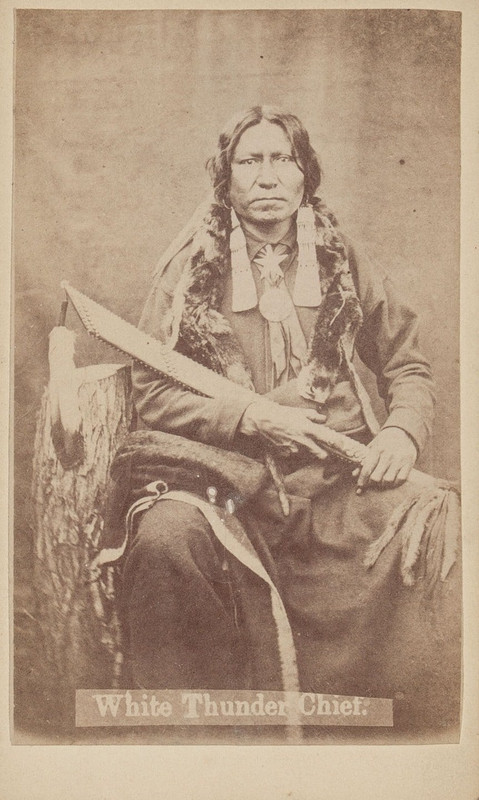 White Thunder by Cross. No knives this time, but the club seems similar to those that have them. Is this a warrior society badge of office?  Here's Red Shirt, by Mitchell, who has a similar club 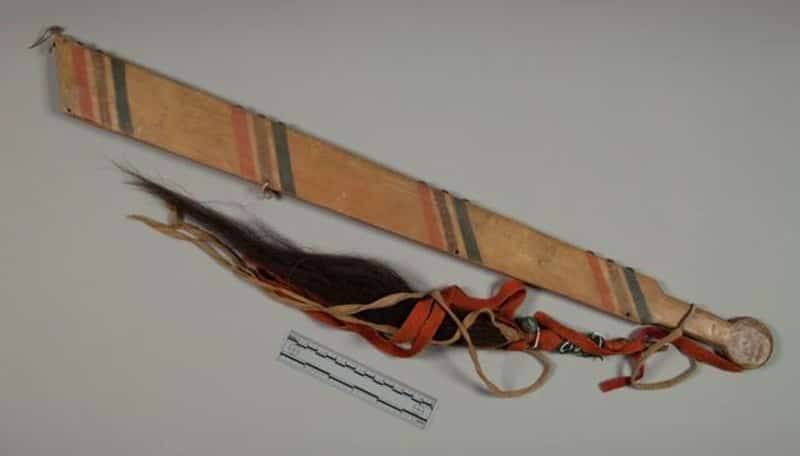 Presumably a variant on this kind of staff, collected at Fort Buford before 1869? |
|
|
|
Post by nicolas (carlo) on Nov 27, 2016 4:57:15 GMT -5
Beautiful examples Grahame. Although I think the last one is a riding quirt rather than a war club, given its size and shape.
|
|